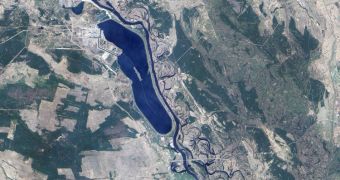Recent investigations conducted at the site of the worst nuclear disaster ever discovered the existence of living plants blossoming in the tremendously radioactive soil. The findings brings new hope that future space explorers will be able to grow crops on other moons or planets.
Experts visited the site of the Chernobyl nuclear power plant, the site where a nuclear reactor blew its top of, and then entered meltdown, in 1986. Since then, scientists have been monitoring the area.
They were surprised to learn that a wide variety of plants were able to endure at the location, even if exposed to high levels of radiation. According to the results of advanced lab tests, only 5 percent of the proteins in this vegetation suffered changes on account of the accident.
Oil-rich flax plants discovered in the area even manage to thrive in an environment that would quickly kill a fully grown human. What specialists are curious to learn is how these plants were able to adapt their biochemistry to the new environment in just two decades.
“My favorite speculation is that when life on Earth was evolving, radioactivity was much more present on Earth's surface than is today. And so the plants are somehow 'remembering' it, [which is] what helped them to adapt in Chernobyl's radioactive area,” explains Martin Haiduch.
The expert holds an appointment as a senior scientist at the Slovak Academy of Sciences (SAS) Institute of Plant Genetics and Biotechnology, Space reports.
What Haiduch and University of Missouri-Columbia (UMC) biochemist Jay Thelen are trying to do now is determine the maximum level of tolerance that plants have to radiation. Chernobyl may have been disastrous, but its radiation cannot be compared to that present in outer space.
Thus far, only a limited number of experiments on plant resistance to radiation have been carried out in space. One of them is currently ongoing aboard the International Space Station (ISS), and is called the EXPOSE experiment.
If future astronauts want to explore other planets – such as Mars – and become self-sustaining, then they need to be able to grow their own food. Investigations such as this one may come in very handy when plans for such a mission are being put together.
However, experts draw attention to the fact that radiation may not necessarily be the primary problem of crops. There is no way of knowing how vegetation would react in alien soil, or what the composition of that soil will be.
This is why NASA, for example, is conducting research on developing crops that need no soil to grow, just water. Such an achievement would make the task of growing food a lot easier.

 14 DAY TRIAL //
14 DAY TRIAL //